Assisi is a mecca for many, and a mystery to some. There are those who would say that Assisi is an extraordinarily extravagant and ostentatious celebration of St Francis (Italy's patron saint), who is famous for opposing decadence, promoting non-materialism, and generally living life simply and humbly. Nowhere is the irony more evident than at the Basilica di Santa Maria degli Angeli, or St Mary of the Angels Basilica. This towering edifice, said to be the seventh largest church in Christianity, was built some half a millennium after St Francis lived there and it actually encompasses the miniscule, now highly decorated, Porziuncola Chapel where St Francis lived and founded his Franciscan Order. Glen wonders what the statute of St Francis, eyes rolling heavenward, was thinking about what has been done to his little church, what happened to his teachings...

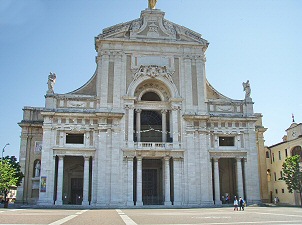 St Mary of Angels Basilica.
St Mary of Angels Basilica.
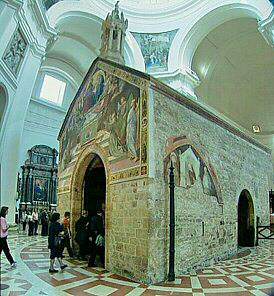 Porziuncola Chapel
Porziuncola Chapel

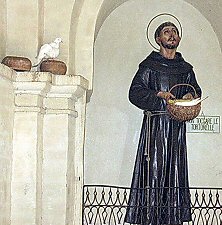 St Francis.
St Francis.
 Looking out from the hill town of Assisi, it appears that common wisdom is that
you farm the flatlands...
Looking out from the hill town of Assisi, it appears that common wisdom is that
you farm the flatlands...
and looking around the actual hill town of Assisi itself, it appears that the common wisdom is that you use the hills to create steep, picturesque alleyways.
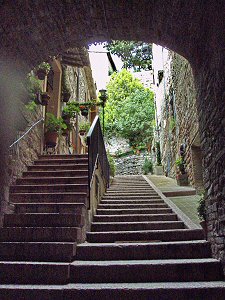 Some alleys are stepped.
Some alleys are stepped.
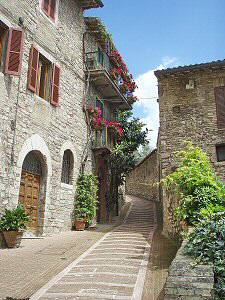 Some alleys are ramped.
Some alleys are ramped.
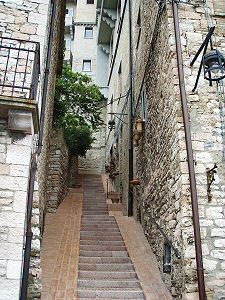 Some alleys are stepped and ramped.
Some alleys are stepped and ramped.
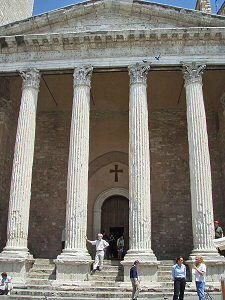
Assisi
used to be a Roman town and has long had spiritual connections, as evidenced by
the Temple of Minerva. You can still see the temple's original stone floors
inside, including the drains for blood sacrifices, but the interior has been
converted to a Christian church, the Church of Santra Maria sopra Minerva
(the Church of St Mary over Minerva).
There is an interesting blend of old and new in Assisi.
An earthquake damaged many of the buildings several years ago and reconstruction
continues. New construction is also evident, but modern styles appear to be
shunned in a concerted effort to make the old and new blend together.
The rule in Assisi seems to be, if there is an open space, put a geranium there! Actually, Assisi holds an annual wall-garden contest each June, and some of these gardens are very creative. Nature-loving St Francis probably would have approved of this effort to green the stony city.
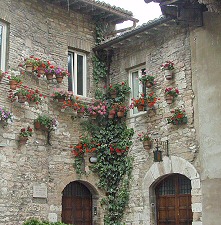
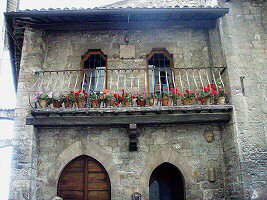
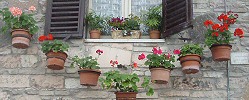
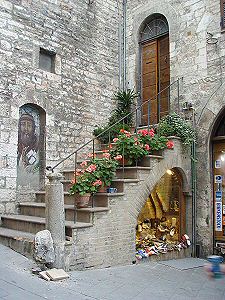
As with any hill town or walled city, space is at a premium and every nook and
cranny is put to use. Potted plants line these steps, a shoe shop's display
window is tucked underneath, and the old, blocked doorway is used for artwork.
Of the several churches in Assisi, the grandest is the Basilica of San Francesco d'Assisi, built to hold the body of St. Francis. The interior is filled with frescoes and other artwork by Giotto and other renowned artists. It is to this landmark that so many are drawn. Relics of the saint are a stark reminder that Francis was a real person and remind one of his philosophy: his short robes (he was less than five and a half feet tall) were well worn, carefully patched and mended, and quite simple. On the other hand, his liturgical items were very fine Ė Francis didnít skimp where God was concerned.

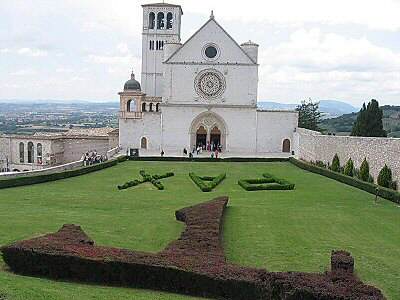
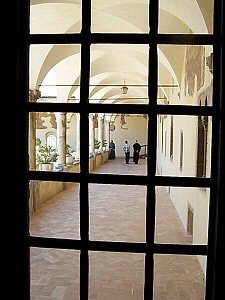
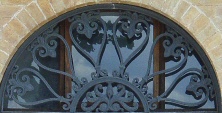
Click below to watch Assisi (4:03)

